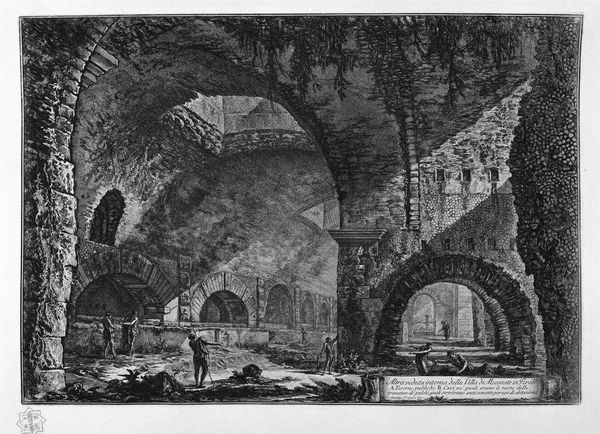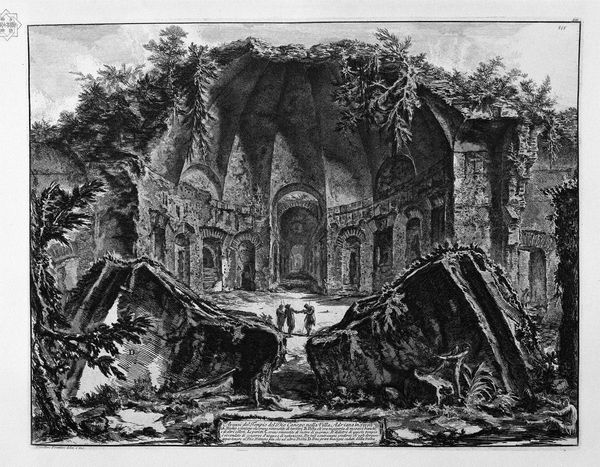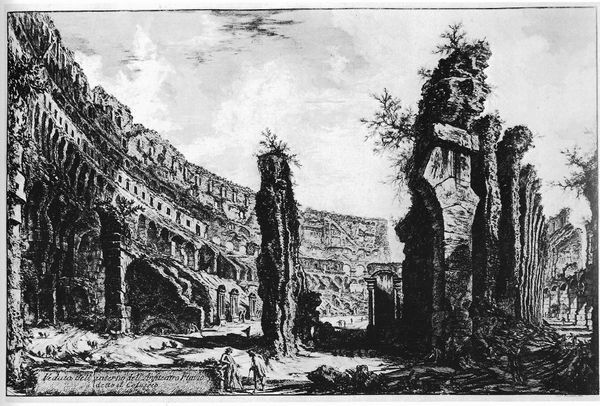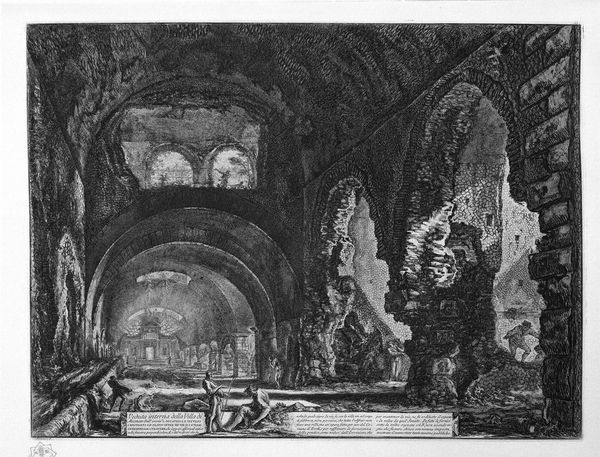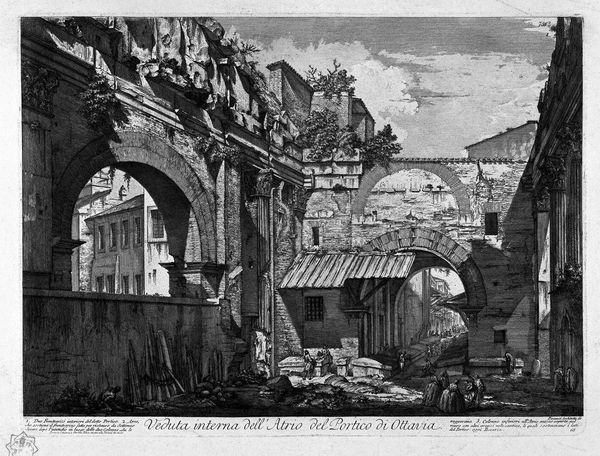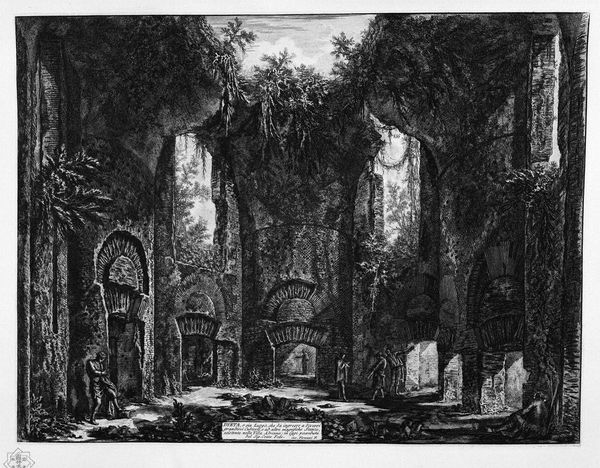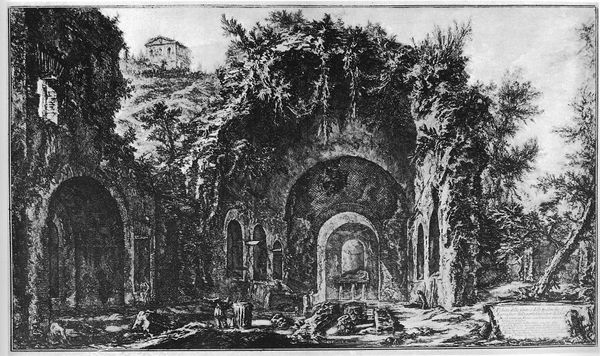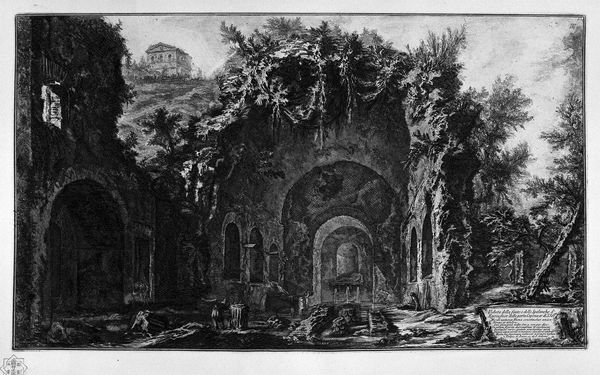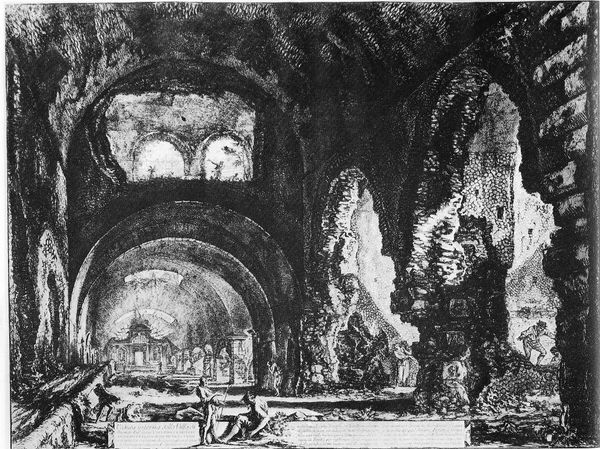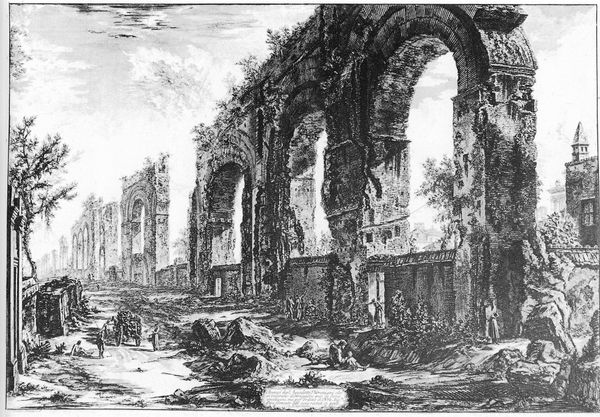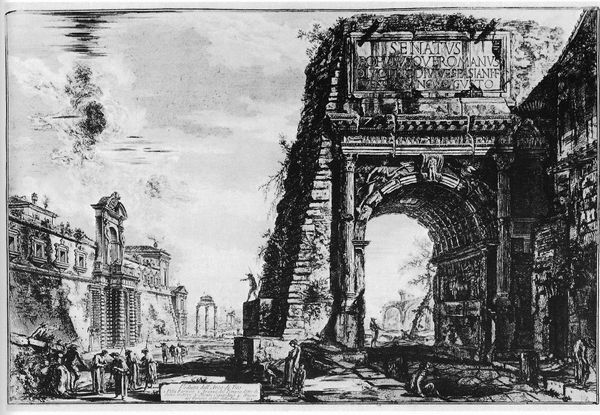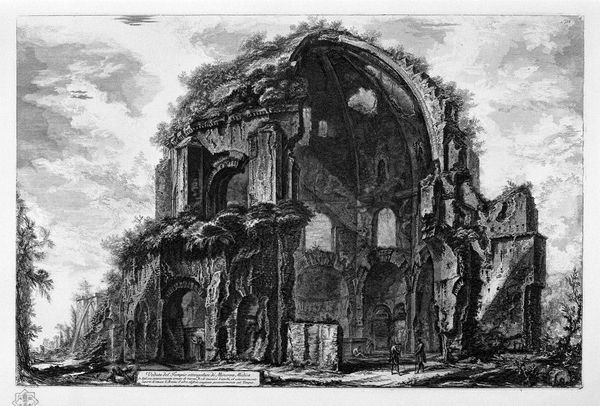
drawing, print, engraving, architecture
#
drawing
#
baroque
# print
#
carving
#
sculpture
#
landscape
#
form
#
arch
#
carved
#
line
#
cityscape
#
engraving
#
architecture
Copyright: Public domain
Editor: Here we have Giovanni Battista Piranesi's "Vedute di Roma", an engraving showing what looks like an ancient, ruined hall. I find the composition quite striking – the scale feels both massive and intimate at the same time. How do you read this piece? Curator: Piranesi’s prints, like this "Vedute," are fascinating precisely because they present a very particular image of Rome. We see these crumbling ruins, and it’s easy to romanticize them, but Piranesi was also making a statement about the city's political and cultural decline. He's playing with the contrast between the grandeur of the Roman Empire and its present state of decay, asking viewers to consider what happens when power structures crumble. Editor: So, the picturesque decay wasn’t just for show, but served as a kind of social commentary? The small figures scattered about add an interesting dimension, almost like modern tourists encountering ancient history. Curator: Exactly! Those figures aren't just incidental; they emphasize the scale and underscore humanity’s relative insignificance in the face of historical forces. He's inviting his 18th-century audience – many of whom were on the Grand Tour – to contemplate the weight of history and its impact on the present. What do you think of the effect of printmaking here, with the clear lines and contrasts? Editor: The stark contrast of light and shadow definitely amplifies the drama, maybe even suggesting a critique of the institutions that allowed such grand architecture to fall into disrepair. Curator: Precisely. Consider how prints were often used to disseminate political ideas; Piranesi uses this medium to disseminate not just images but also a particular political consciousness. Editor: I hadn’t considered that! So much more than just a pretty picture of old ruins. Thanks, that gives me a completely different perspective on it. Curator: Indeed, these views offer us a lens into the artist's critical view of his society through a creative composition and careful staging.
Comments
No comments
Be the first to comment and join the conversation on the ultimate creative platform.
